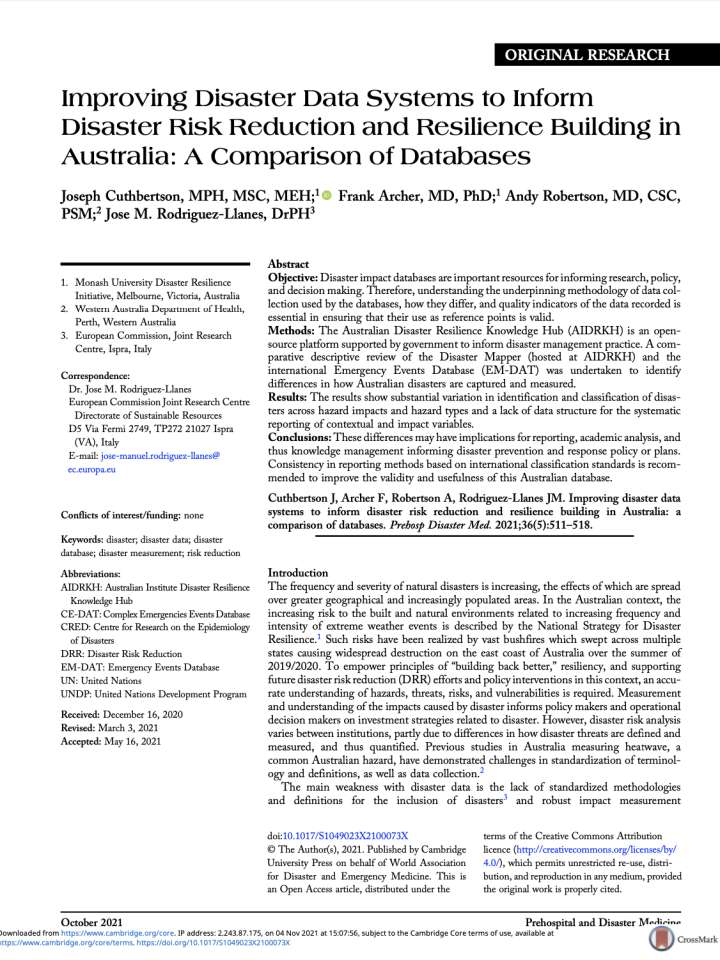Improving disaster data systems to inform disaster risk reduction and resilience building in Australia: A comparison of databases
This paper analysis how disaster data systems can be improved to inform disaster risk reduction and resilience building in Australia trough a comparison of databases. Disaster impact databases are important resources for informing research, policy, and decision making. Therefore, understanding the underpinning methodology of data collection used by the databases, how they differ, and quality indicators of the data recorded is essential in ensuring that their use as reference points is valid.
The results show substantial variation in identification and classification of disasters across hazard impacts and hazard types and a lack of data structure for the systematic reporting of contextual and impact variables. These differences may have implications for reporting, academic analysis, and thus knowledge management informing disaster prevention and response policy or plans. Consistency in reporting methods based on international classification standards is recommended to improve the validity and usefulness of this Australian database.
Explore further

